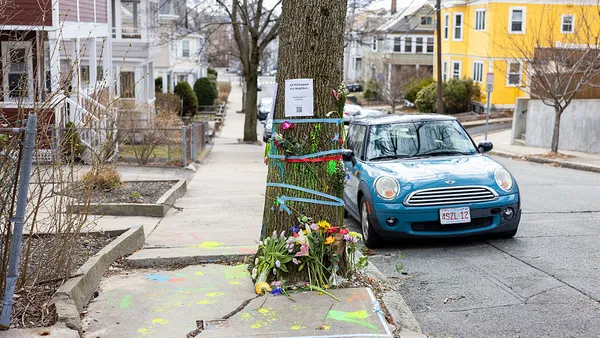Dive Brief:
- First-generation students account for one-third of all college enrollees but slightly more than one-quarter of them will earn a degree in four years, according to a new report from the Center for First-Generation Student Success analyzing the effectiveness of programs and services supporting first-generation students.
- Eight in 10 four-year colleges identify first-generation students during the admissions process, while only six in 10 track outcomes and just four in 10 use data to inform programs that support this group. Even fewer, three in 10 colleges, store information on first-generation students in such a way that faculty can access and use.
- The report offers several recommendations of ways to better help this group, such as making support services available beyond the financial aid office, celebrating milestones, offering cohort-based programs and mentorship opportunities, and improving data capture and tracking.
Dive Insight:
The gap between the share of first-generation students at U.S. colleges and the proportion of those students who graduate within four years points to a tremendous amount of work institutions must do to ensure this group not only gains access to college, but also graduates and moves on to gainful employment.
The Center's report mentions the creation of community as one of several ways to make sure first-generation students feel like they are part of the institution. In 2014, Brown University implemented 1vyG, a network for first-generation college students. It has since been adopted at other Ivy League colleges. The program boasts a graduation ceremony specifically for first-generation students, textbook donation and mentoring with graduate students.
Community colleges traditionally attract high numbers of first-generation students because of the lower barrier to entry as well as their lower tuition costs. For these institutions, innovative solutions for boosting student retention and graduation rates is top of the list when supporting first-generation students.
Offering supplemental instruction in high-risk classes helped LaGuardia Community College in New York increase retention and improved students' grades. The program pays students who have successfully completed the course to tutor and mentor students.
One complicating factor is that the definition of who counts as a first-generation student can vary by institution. Fifty-five percent of institutions surveyed by the center define first generation as neither a parent nor a guardian has completed a four-year degree. The report recommends finding a common definition as a starting point.














